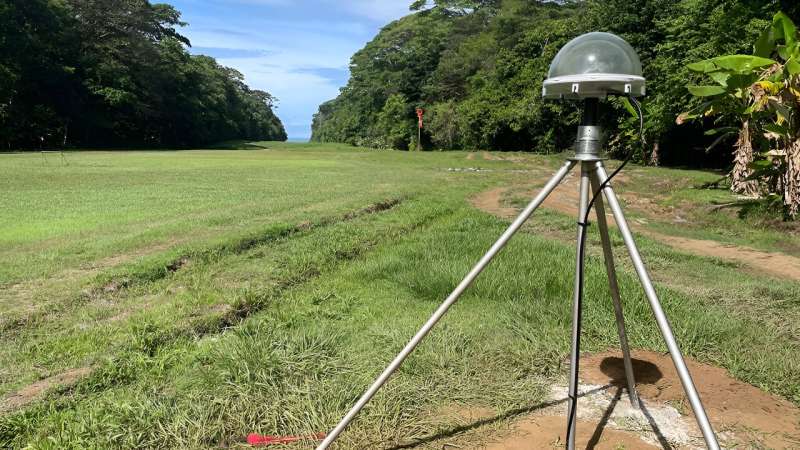This article has been reviewed according to Science X's editorial process and policies. Editors have highlighted the following attributes while ensuring the content's credibility:
fact-checked
peer-reviewed publication
proofread
The first slow-slip events seen off southern Costa Rica

Slow-slip events (SSEs) are slow earthquake ruptures that generate just a few centimeters of slip over periods ranging from days to years. They are thought to occur in many of the world's subduction zones, but these subtle slips can be tricky to observe, especially when they happen under the ocean, where monitoring capabilities are often more limited than on land.
Gaining a better understanding of where and how often SSEs occur is important, in part because they may modulate larger earthquakes that are more likely to cause damage and produce tsunamis.
In Geophysical Research Letters researchers provide new insight into SSEs, reporting five events that occurred off the Osa Peninsula of southern Costa Rica, where the Cocos Plate subducts under the Caribbean Plate. The SSEs—the first ever documented off this part of Costa Rica—took place in 2013, 2018, and 2022 and were identified using data from a network of continuously operating Global Navigation Satellite System (GNSS) stations.
The recorded SSEs are especially significant because they occurred at relatively shallow depths on the subduction zone. Unlike deeper SSEs that happen under land, shallow events often rupture under the ocean and may influence tsunami hazards.
The team calculated that the amount of slip in the four most recent of these events (two each in 2018 and 2022) seems to account for all of the tectonic convergence that accumulated on a localized patch of the subduction zone during the intervening four-year period, perhaps limiting the magnitude of quakes to come.
Yet large earthquakes will likely happen again near the Osa Peninsula, which hosted three magnitude 7–7.5 events in the 20th century. The new observations of shallow SSEs off Costa Rica may help determine where such future earthquakes could rupture in the region, the authors say. The data also help to broaden researchers' understanding of how slow slip affects strain accumulation and where and when SSEs are likely.
More information: Mason Perry et al, Shallow Slow Slip Events Identified Offshore the Osa Peninsula in Southern Costa Rica From GNSS Time Series, Geophysical Research Letters (2023). DOI: 10.1029/2023GL104771
Journal information: Geophysical Research Letters
Provided by Eos




















